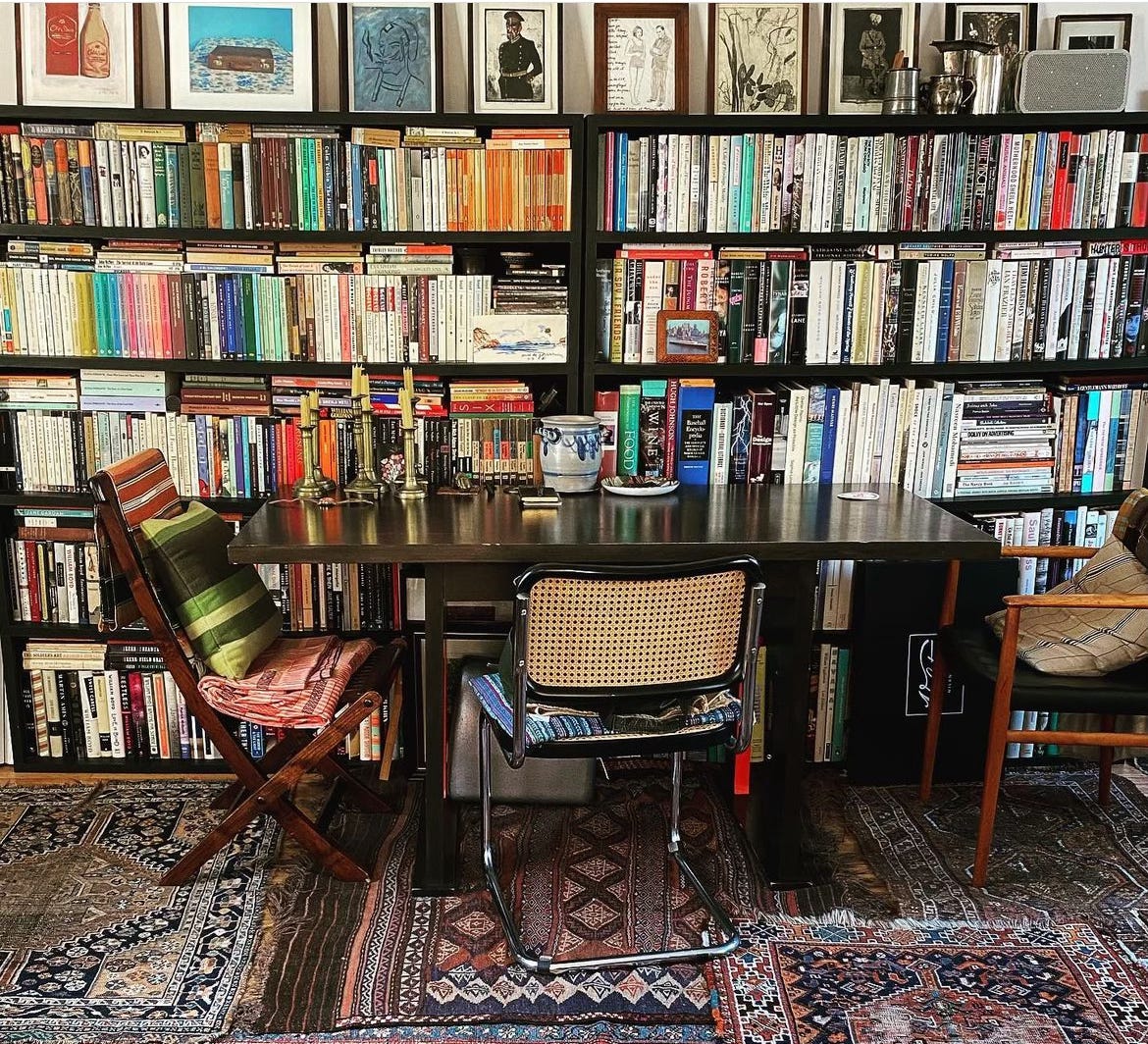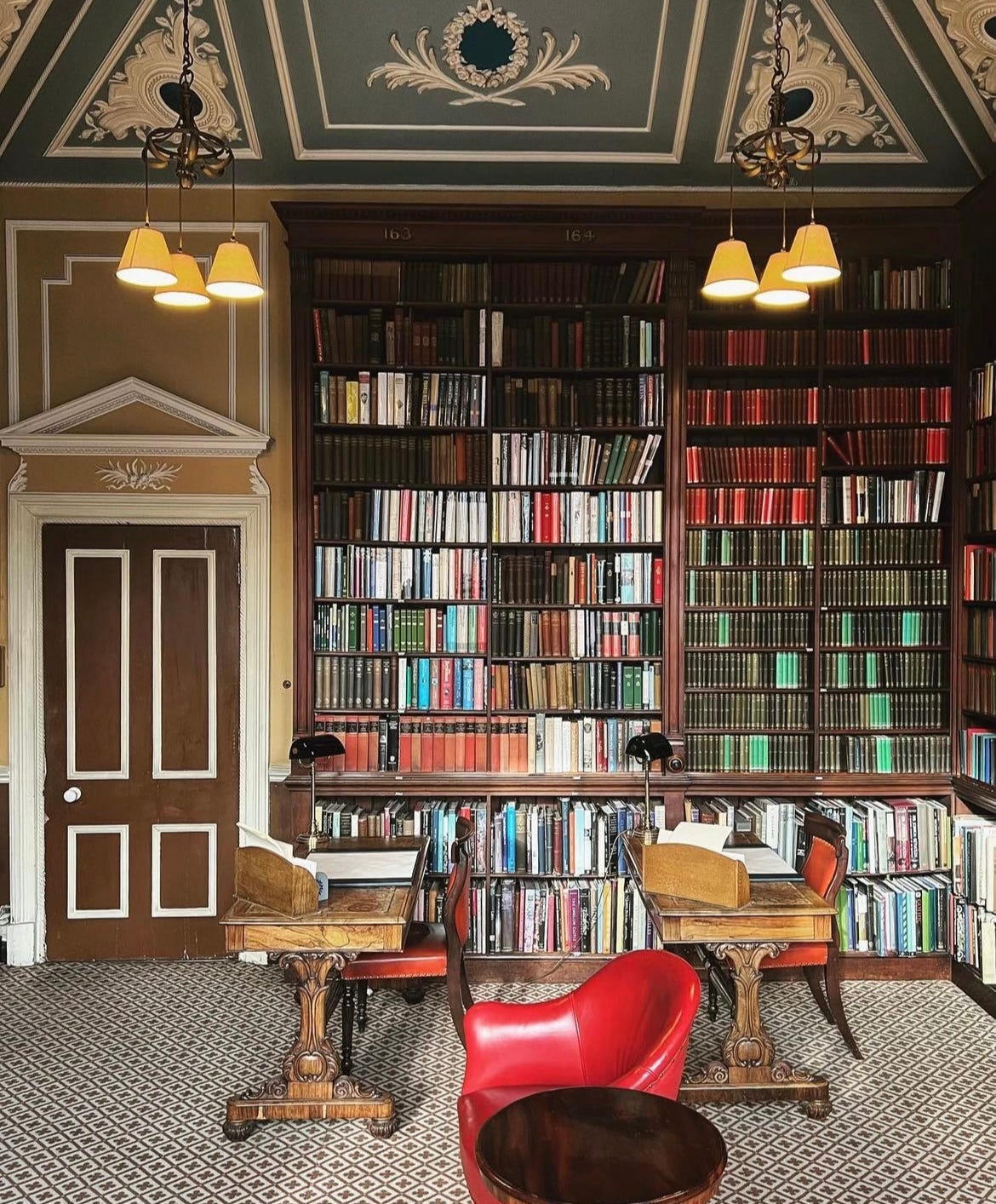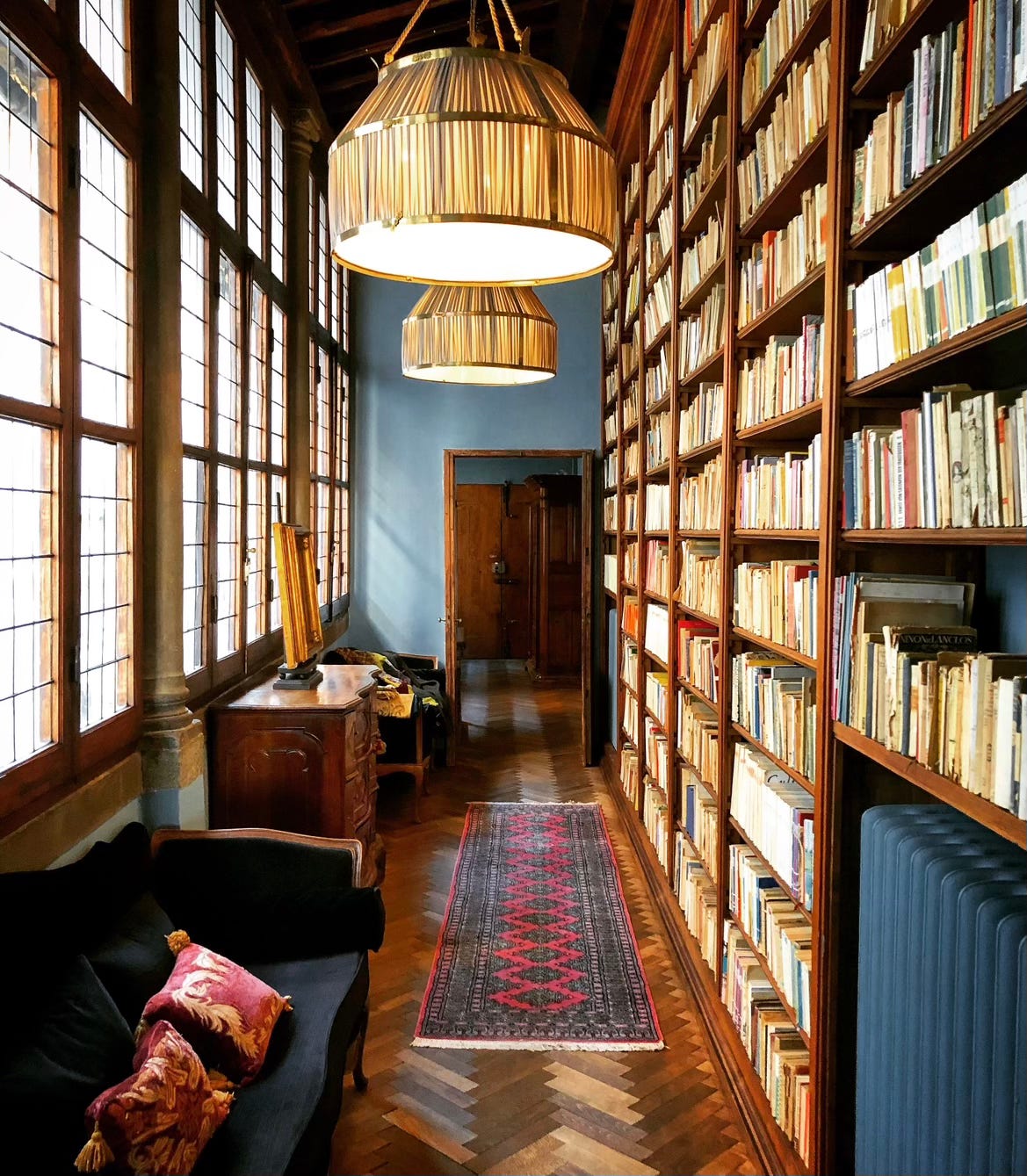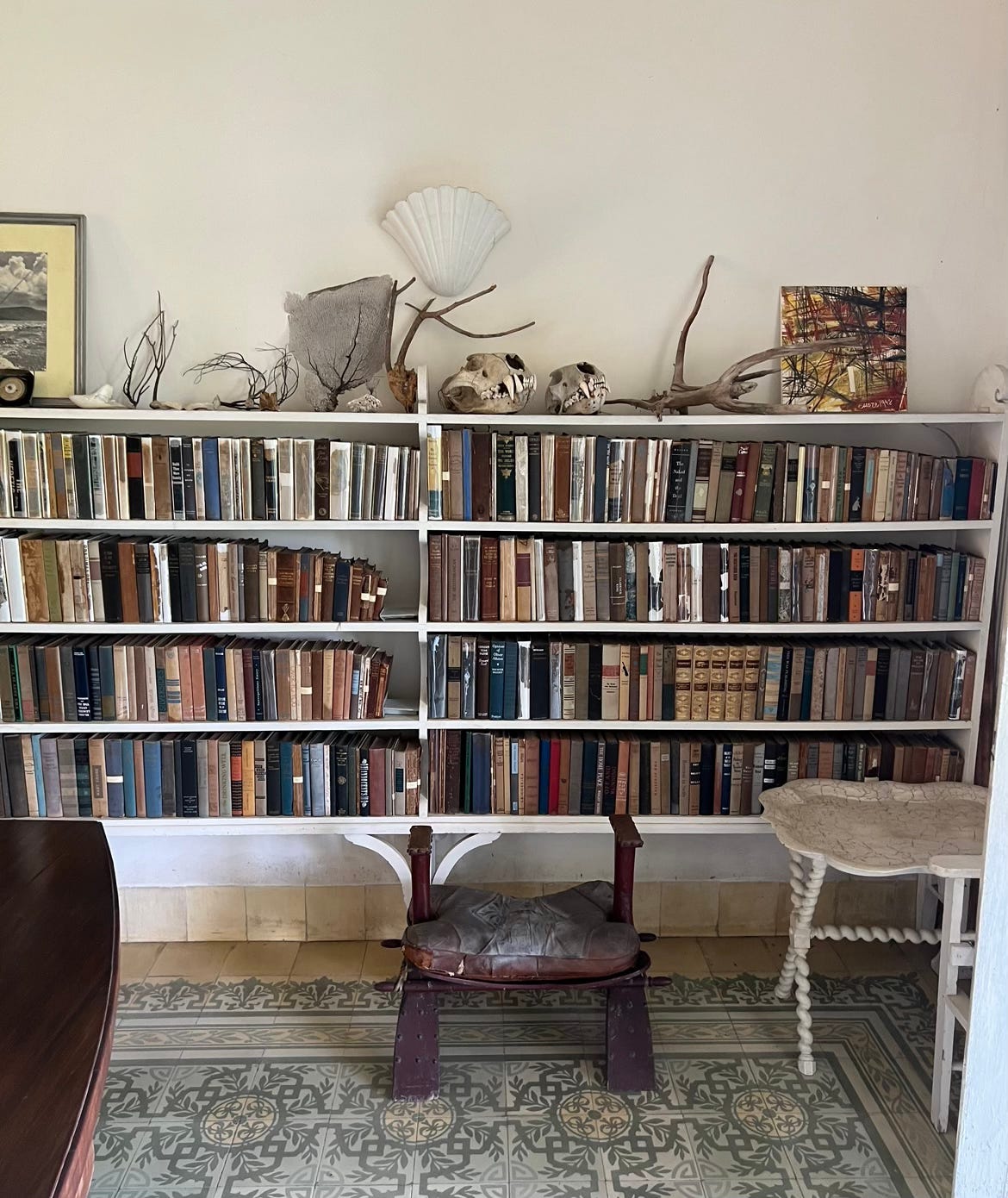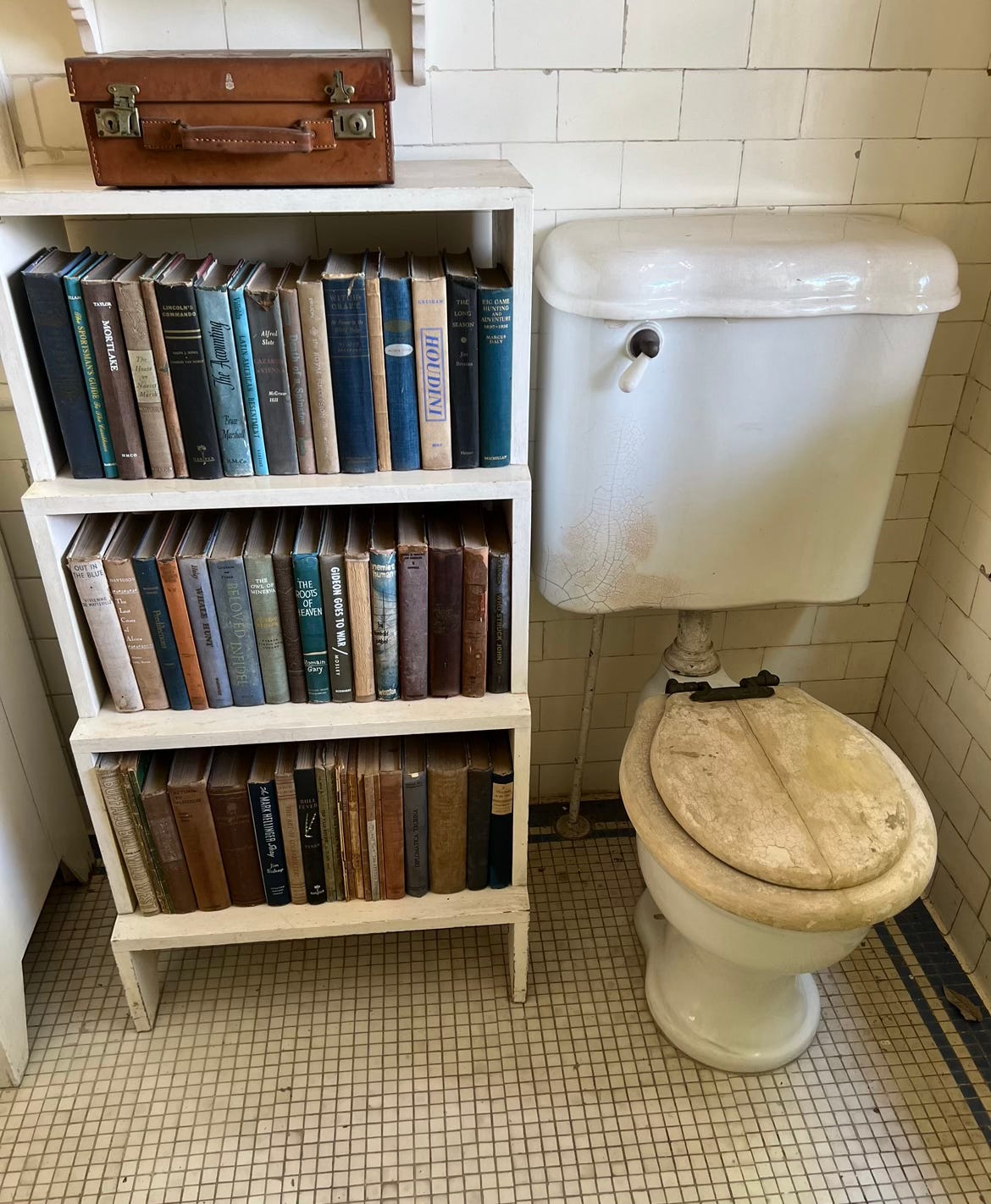West Village Bookshelf
A good bookshelf should be full. Or nearly full anyway. An empty bookshelf has so much more to offer the world. It sits like an empty closet, an empty museum, an empty stadium, unfulfilled, not reaching its potential. Trust our strength, the bookshelf begs us, let us show off, baby!
Empty bookshelves are unfamiliar to me. My issue is too many books. This leads to a lifetime of stacking, itself a dangerous path. When you admit that your reading ambitions require the air rights above every horizontal surface in your home—even the floor is in play—then you have a problem I can relate to.
A personal library announces many things. Some are general (“I like to read”), some are about taste (“These are the books I enjoy”), and some are about personality (“This is the way I arrange them”). This combination makes a library so revealing.
Bookshelves are such a transparent expression of personality that I often avoid studying them at a friend’s home—I may as well examine their bank statements. The real reason is that I don’t want to rush to judgment about their Jeff Koons catalog or trash paperback. But how can I not? That copy of Moby Dick isn’t creased enough to have been finished (“Were you assigned that in high school?”).
London Bookshelf
Florence Bookshelf
A library means one thing when you live alone and another when you live with someone. Then it becomes a shared space and rows of fishing books might not align with the domestic agenda. We avoided this issue by putting my books in storage (and the bookshelves to boot). I took this badly for a while but now, to my surprise, I find it relaxing to not live completely surrounded by books. I’m sure that will wear off.
I’m fascinated by how people arrange their bookshelves. There’s always a controversy about color coordination—generally I’m opposed. This seems to communicate that books are mere decor and recalls Williamsburg-inspired hotel lobbies of the 2010s. But that’s not always true. A row of orange Penguin paperbacks could be thematically connected; a certain era a publisher’s fiction (like Vintage Contemporaries or old Scribner’s) belong together. These themes are what I really enjoy about bookshelves.
Some prefer alphabetization. To me, this lacks personality and imagination. It makes sense for libraries, for bookstores, for helping you find what you seek. But I want to find something I didn’t know I was looking for. I want to discover the neighbor of a familiar friend. Bruce Chatwin then Patrick Leigh Fermor then, oh what’s this, The Way of the World by Nicholas Bouvier, let’s take a look. Biographies of Kim Philby and Anthony Blunt, badly behaved Englishmen, belong side by side. Feels like John Le Carré should go next, but that’s fiction and you have to have a policy about these things. Does Nancy Mitford belong next to her friend Evelyn Waugh? Yes. Then what about the diaries of Chips Channon (same era, similar social circle) who she loathed?
I like black bookshelves (so do my mother and Axel Vervoordt), or any dark color. White shelves, I feel, are less substantial. Speaking of substantial, I like reassuringly thick bookshelves. These are often old, expensive and hard to find. So take matters into your own hands. Have bookshelves made (more luxurious than a suit, and you can share them) then make sure the front of the shelf is slightly thicker than the typical width of wood. This means adding a facing strip of wood, to each shelf. This is high level bookshelf theory. Whenever I come across it (you can feel the thinner shelf behind the facing) I know I’m dealing with somebody diabolical. Once you see it every other bookshelf is too thin.
A good bookshelf doesn’t need to be high. It can come up to your waist or the height of a cabinet—use the top for a vase, your beloved collections or an ashtray you didn’t steal from the Gritti Palace. But a shelf that goes to the ceiling is comprehensive and impressive and better if you have a ladder. But a bookshelf can be small and unexpected: There’s one in Ernest Hemingway’s bathroom at his farm in Cuba.
Hemingway’s Cuba Bookshelves
Many bookshelves have the shelves too far apart. Don’t decide how far to set your shelves based on one huge book. That’s wasted space! We don’t want that. What we do want is as little negative space as possible. Put the huge book on a table or lay it flat on the shelf. I resent art catalogs that are too tall or too horizontal to work on any shelf—stop messing with my system, Larry Gagosian!


